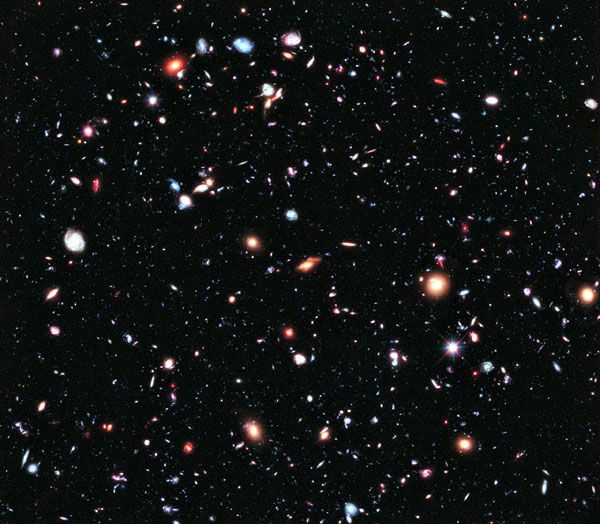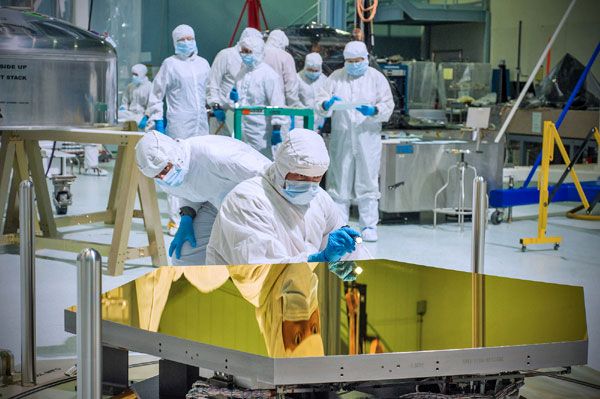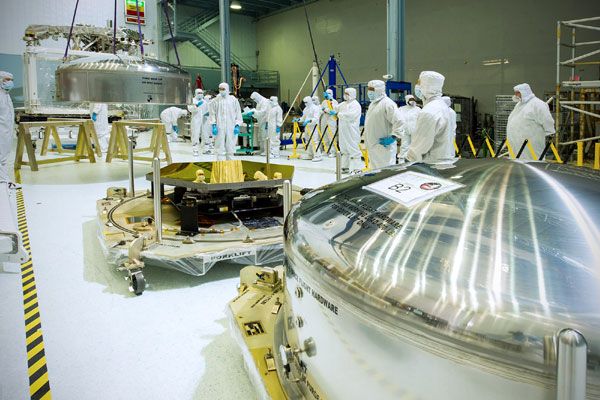
NASA, ESA, G. Illingworth, D. Magee, and P. Oesch (University of California, Santa Cruz), R. Bouwens (Leiden University) and the HUDF09 Team
Space Telescopes: The Present & Future... Within a one-week span, NASA released an amazing composite photo using images taken by the Hubble Space Telescope as well as announcing that the first two of 18 mirror segments that will fly on Hubble's successor, the James Webb Space Telescope (JWST), were recently delivered to NASA. In the pic above, the eXtreme Deep Field (XDF) is shown. Comprising 2,000 images shot by several cameras that flew aboard Hubble over the past decade and assembled into a 23-day time exposure, the XDF brings into view about 5,500 galaxies...including some that were formed only 450 million years after the Big Bang.

NASA / Chris Gunn
In the photos directly above and below, engineers at the Goddard Space Flight Center (GSFC) in Greenbelt, Maryland inspect one of the two mirror segments that were delivered from Ball Aerospace in Boulder, Colorado last week. The remaining 16 segments will be sent to GSFC over the next 12 months, prior to beginning integration into the JWST itself in 2015. After the JWST launches into space in 2018, the 18 segments—each weighing 88 pounds (40 kilograms) and having a width of 4.2 feet (1.3 meters)—will form into a primary mirror that is 21.4 feet (6.5 meters) in diameter. Overlooking the fact the JWST has forced NASA to take funding from other projects to pay for the telescope's $8.7 billion price tag, it has been interesting to see such an ambitious project begin to take shape. Keep in mind that the launch of the Mars Science Laboratory mission was delayed from 2009 to last November due to escalating costs and testing of the Curiosity rover falling behind schedule. These are pretty much moot points now that NASA is basking in the success of Curiosity since she safely landed on Mars last month. I won't be surprised if the JWST achieves redemption by sending home some of the most jaw-dropping pics ever taken of the universe that rival or exceed those of Hubble once the Webb telescope becomes operational 6 to 7 years from now. Patience is a virtue.

NASA / Chris Gunn

No comments:
Post a Comment